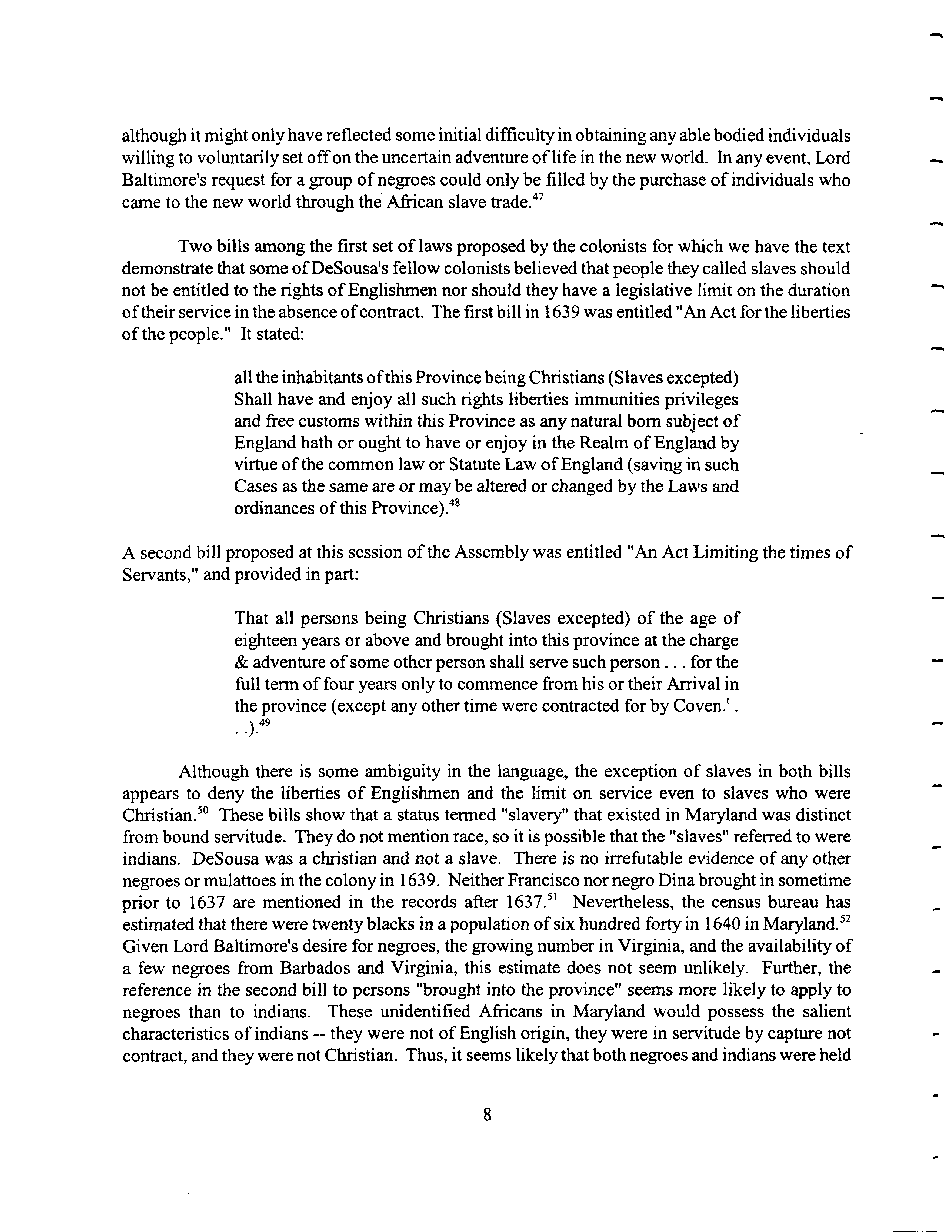|
although it might only have reflected some initial difficulty in obtaining any able bodied individuals
willing to voluntarily set off on the uncertain adventure of life in the new world. In any event, Lord
Baltimore's request for a group of negroes could only be filled by the purchase of individuals who
came to the new world through the African slave trade.47
Two bills among the first set of laws proposed by the colonists for which we have the text
demonstrate that some of DeSousa's fellow colonists believed that people they called slaves should
not be entitled to the rights of Englishmen nor should they have a legislative limit on the duration
of their service in the absence of contract. The first bill in 1639 was entitled "An Act for the liberties
of the people." It stated:
all the inhabitants of this Province being Christians (Slaves excepted)
Shall have and enjoy all such rights liberties immunities privileges
and free customs within this Province as any natural born subject of
England hath or ought to have or enjoy in the Realm of England by
virtue of the common law or Statute Law of England (saving in such
Cases as the same are or may be altered or changed by the Laws and
ordinances of this Province).48
A second bill proposed at this session of the Assembly was entitled "An Act Limiting the times of
Servants," and provided in part:
That all persons being Christians (Slaves excepted) of the age of
eighteen years or above and brought into this province at the charge
& adventure of some other person shall serve such person... for the
full term of four years only to commence from his or their Arrival in
the province (except any other time were contracted for by Coven.'.
•i 49
Although there is some ambiguity in the language, the exception of slaves in both bills
appears to deny the liberties of Englishmen and the limit on service even to slaves who were
Christian.50 These bills show that a status termed "slavery" that existed in Maryland was distinct
from bound servitude. They do not mention race, so it is possible that the "slaves" referred to were
indians. DeSousa was a Christian and not a slave. There is no irrefutable evidence of any other
negroes or mulattoes in the colony in 1639. Neither Francisco nor negro Dina brought in sometime
prior to 1637 are mentioned in the records after 1637.51 Nevertheless, the census bureau has
estimated that there were twenty blacks in a population of six hundred forty in 1640 in Maryland.52
Given Lord Baltimore's desire for negroes, the growing number in Virginia, and the availability of
a few negroes from Barbados and Virginia, this estimate does not seem unlikely. Further, the
reference in the second bill to persons "brought into the province" seems more likely to apply to
negroes than to indians. These unidentified Africans in Maryland would possess the salient
characteristics of indians — they were not of English origin, they were in servitude by capture not
contract, and they were not Christian. Thus, it seems likely that both negroes and indians were held
�
|

